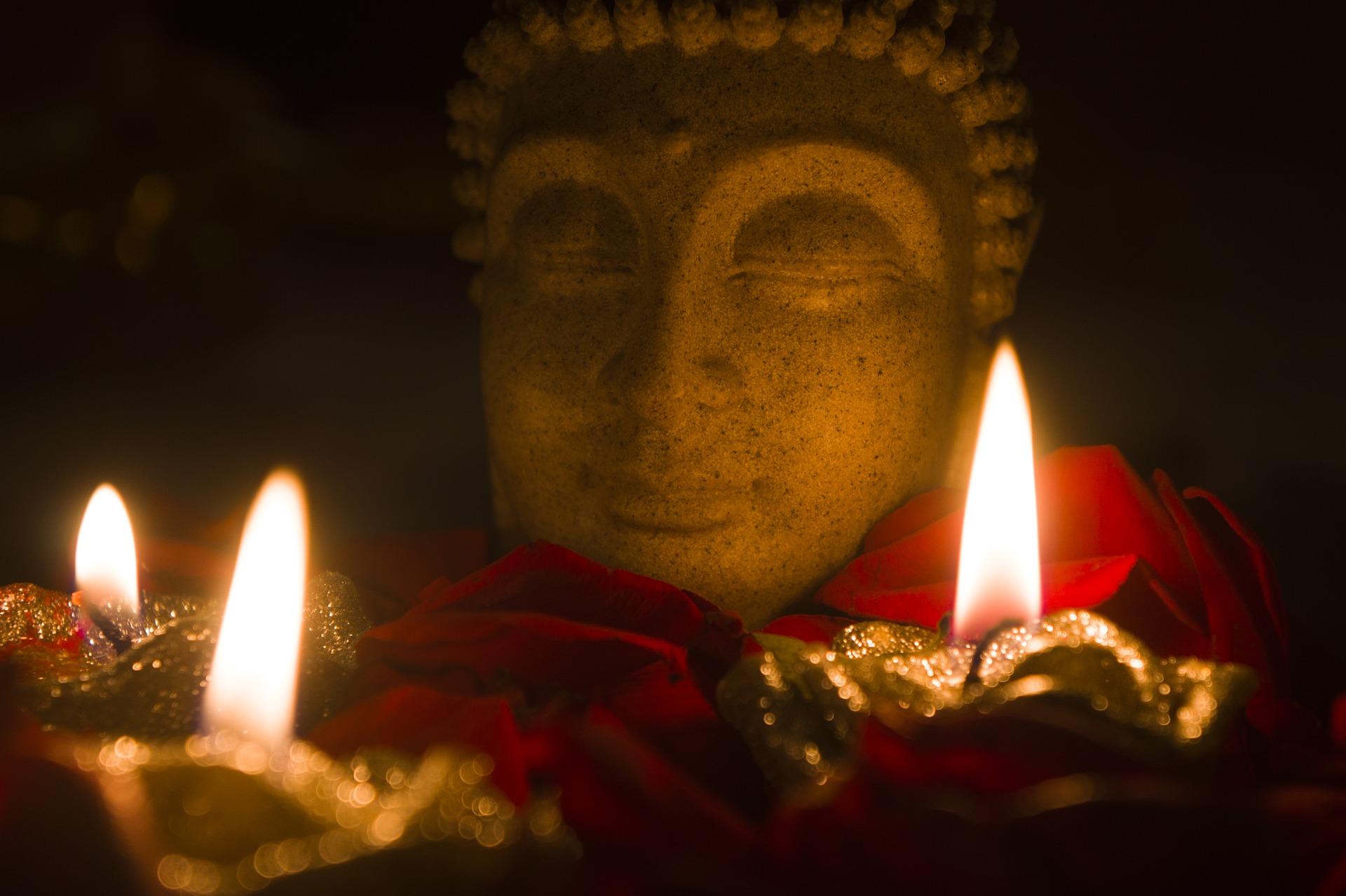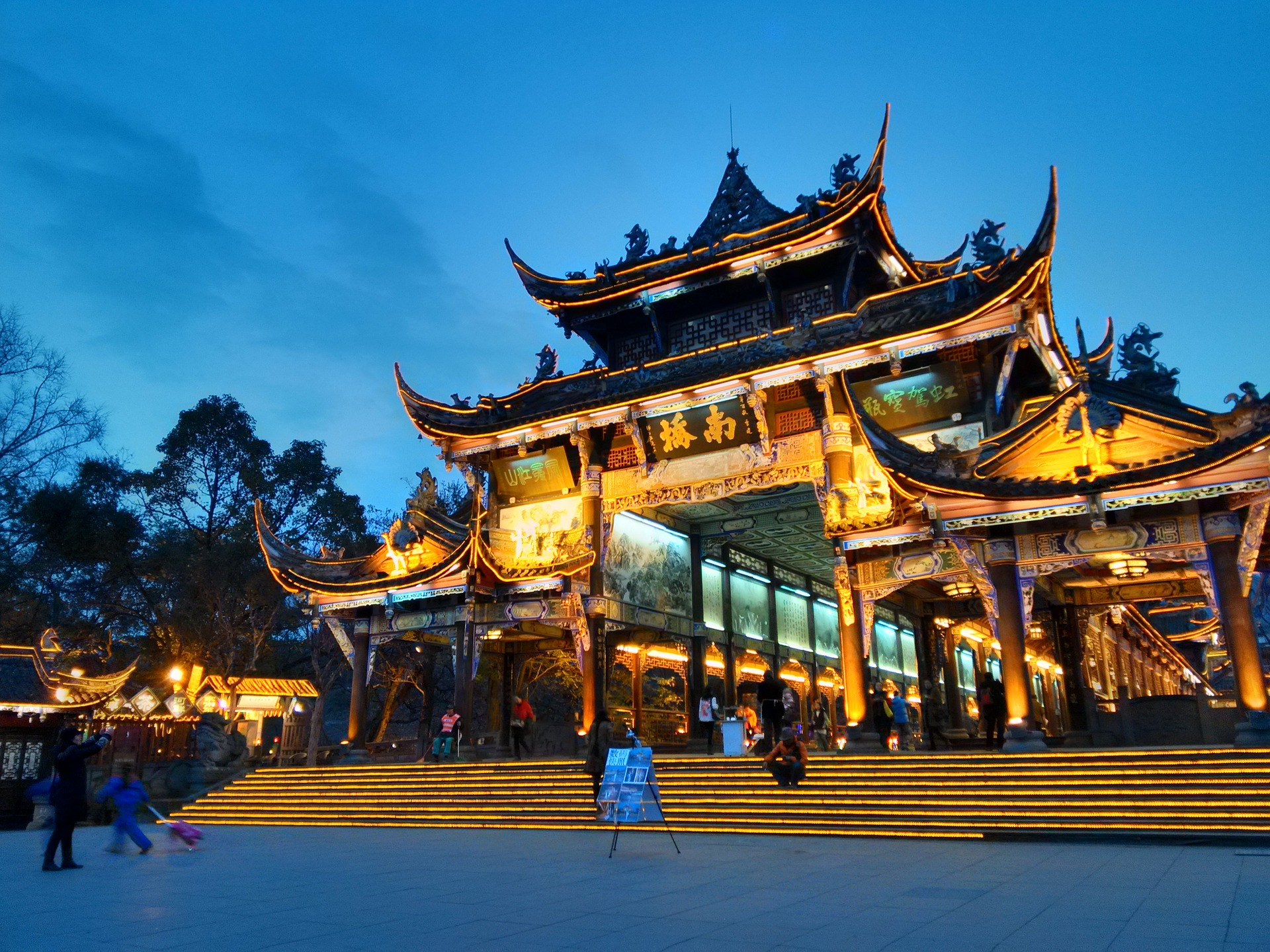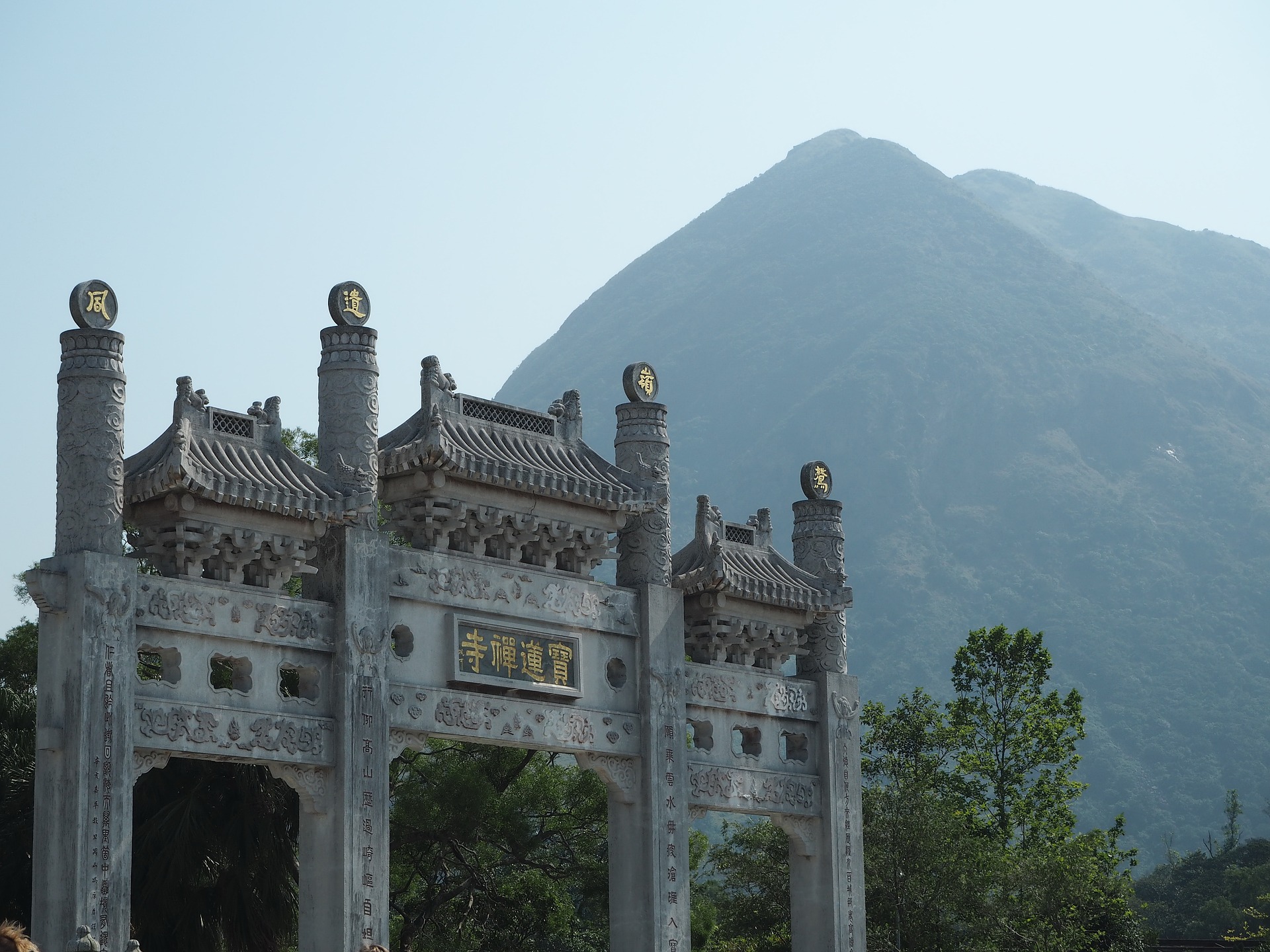St Anne’s Academic Review 7 – 2017
What is “religion” in East Asia?
With special reference to the role of place in “religion” in China and Japan before the nineteenth century.
Chui-Jun Tham
STAAR 7 – October 2017, pp. 91-97

Religion
Secularisation and the rise of comparative research on religion has resulted in two shifts in how scholars define religion. The first is what Jason Ānanda Josephson denotes as the shift from a theocentric to a hierocentric conception of religion. Between the seventeenth and twentieth centuries, European and North American conceptions of religion as the worship of a Christian-esque supreme entity in different cultural forms, were replaced by the conception of religion as ‘an established set of beliefs and tenets defining the relationship between man and the sacred’. The “sacred” was a vaguer concept than the anthropomophic deity, and thus supposedly more globally relevant. However, not only do hierocentric definitions of religion preserve a Christian-esque division between the world of man and the world of the sacred, they also generally fail to clarify what the “sacred” is, thus failing to illuminate, much less divorce the term, from the Christian, European context in which it was developed. In other words, whilst scholars have attempted to divorce definitions of religion from Christian doctrine and practice, the new definitions they seek are still developed and articulated within a conceptual framework derived from Christian doctrine and practice. Even when definitions of religion are revised to accommodate systems of belief other than Christianity, and even when it is recognised as an etic concept (an external analytical scheme imposed on the source material) as opposed to an emic concept (a term that actors within a society or era under study themselves espoused), these definitions retain two fundamental assumptions. The first is that there is a division between the secular and the supernatural. The second is that beliefs and practices are most usefully analysed as an integrated whole.
The second shift in how scholars have defined religion recalls the pre-seventeenth-century, pre-Protestant conception of religion. The Reformation brought about an emphasis on a personal relationship to God. Before the Reformation, the standard European usage of “religion” (religio) was in terms of the performance of ritual obligations, particularly the state of life bound by monastic vows, and the pre-Christian Roman usage of the term to refer to prohibitions or obligations that did not necessarily relate to the supernatural. That is to say, whereas theocentric definitions of religion emphasise belief, hierocentric definitions emphasise systems, doctrinal or institutional. The shift amongst scholars to a hierocentric definition of religion is likely due to the need for a means of identifying candidates for inclusion in the category of religion without referring to content, and hence implicitly to the degree of their correspondence with Christian ideas and forms. This shift does not mean that earlier definitions have disappeared. Oxford Dictionaries, for example, provides the casual inquirer with theocentric, hierocentric, and secularised definitions, the secularised definition being religion as a ‘pursuit or interest followed with great devotion’. Where scholars have not explicitly problematised the concept of religion in non-Christian contexts, religion risks being understood and applied in an inconsistent manner.
Where scholars have problematised the concept of religion, their arguments fall into three categories: (i) those who see religion, superstition, the sacred, or in other words all non-scientifically provable beliefs to be an undifferentiated mass; (ii) those who see religion as an etic concept that needs to be modified, but which is otherwise useful; and (iii) those who consider religion irrelevant before the idea of religion was introduced into emic discourse. Scholars who perceive religion as an etic or emic concept in reference to East Asia in particular are further distinguished by whether they argue for treating a community’s religion as an undifferentiated whole, or the demarcation of communal beliefs into multiple religions.
This essay argues that the concept of religion is irrelevant to East Asia before the nineteenth century, when the concept began to make an impact on local discourse. “Religion” suggests a binary between the sacred and the profane, and the existence of distinct systems of belief and practice, neither of which seems to describe the East Asian context. Instead, five malleable categories are posited for the analysis of East Asian worldviews. These categories are: (i) philosophy as the ongoing discussion of thought; (ii) doctrine as the articulation of thought, that is the choosing amongst particular contested meanings to produce a version of philosophy that is ‘formulaic’ and ‘non-reflective’; (iii) the sacred as objects of respect and veneration; (iv) ritual as repetitive and excessive (in proportion to direct utility) behaviour; and (v) the religious, which in its adjectival form denotes the actors and institutions or aspects of institutions associated with the performance of ritual obligations. This essay examines the role that place plays in the multiple worldviews extant in China and Japan before the nineteenth century: as a means of identifying different religious organisations or communities; as the site at which the combination of different doctrines and philosophies occurs; and as a sacred object or means to sacred objects.

Place as Identity Marker
Place was a primary means by which different religious communities or organisations were identified. Doctrines were derived from multiple philosophical traditions on a non-exclusive basis, even though in China, more than Japan, one philosophical tradition tended to be dominant in the combinatory act. As such, indicating the site at which doctrines were developed and disseminated, as opposed to locating them within a particular philosophical tradition or assigning them a new label à la Christianity, was a simpler means of distinguishing one from the other. In Japan, communities practising particular types of Buddhism, such as Rinzai (臨在) or Shingon (真言), rarely referred to themselves by these labels. Place names and founder names were far more common. Even when the term shintō (神道) entered usage in the thirteenth century, it was attached to place or founder names, and as such, referred to combinative and locale-specific doctrines and not membership within an overarching system of belief, that is “religion”.
In the same way that scholars have tended to identify religious communities in Japan by their sectarian affiliation first, the proliferation of academies in the Southern Song is generally seen in terms of the spread of Neo-Confucian thought. This assumption facilitates disregard for how these academies, then treated as sub-groups under the “-ism” of Neo-Confucianism, saw themselves in relation to each other. The founders of these academies, rather than dedicating them to a particular philosophical tradition such as the daoxue (道学), which is the narrowest definition of Neo-Confucianism, selected their locations and legitimated their founding in reference to the relationship that these academies had with a particular scholar. For example, whilst the Yuan scholar Cheng Jufu (程鉅夫) declared that the ‘Way is not attached to a place’, the reason he gives for the establishment of the Green Fields (qingtian青田) academy at the Lu family shrine was that ‘it is from the traces that we know things, and by means of these things, we see the men, enabling scholars of later times to observe and emulate them, and express their feelings. Thus it is as though they are present in this place’. Shrines and tombs were the loci at which ancestral worship occurred; the media between the living and the dead. As such, it was felt that these places were where the teachings of the masters were most easily understood.
Moreover, particularly in the Yuan, “Neo-Confucian” academies were associated not primarily with study, but with the performance of rituals for the revered scholar. Tao An (陶安), the headmaster of the High Purity (gaojie高節) academy stated that the institution was established at the tomb of Yan Guang in Yuyao (餘姚) ‘in order to sacrifice to him’. The founder, or the scholar in whose name an academy was founded, and hence the particular way in which either or both interpreted the philosophical ideas of the time, was more important to the identity of an academy than its location within an overarching “-ism”. Walton emphasises that these academies became increasingly integrated into a landscape of what scholars identify as “religious” institutions such as Buddhism and Daoism. This integration occurred on the premise that what scholars conversely identify as not being religious, but “neo-Confucian” institutions, were previously inimical to their religious counterparts. On the contrary, conflict occurred not just between Buddhist and neo-Confucian institutions, and Daoist and neo-Confucian institutions, but also between Buddhist and Daoist institutions, bringing into question Walton’s distinguishing of Confucianism. What should be emphasised instead is that in academies ‘the pedagogical ideal of ritual veneration of exemplars as a means of instilling values’ became increasingly central to instruction in doctrine. In this instance, religious behaviour, that is the performance of ritual obligations, did not involve interaction or exchange between the human and the non-human. The implied binary between the supernatural and the secular that the term “religion” often suggests does not exist here.
Nonetheless, East Asian worldviews should not, contrary to Stephan Feuchtwang’s argument for a single “Chinese religion”, be seen as monolithic undifferentiated wholes. It is possible to discern different philosophical and doctrinal traditions, to which terms such as Confucianism, Buddhism, and Daoism, can be affixed. It is simply not useful then to label such traditions as “religion” or as purely secular systems of thought, or indeed, to see human actors as thinking and operating within systems. A comparison of China and Japan best illustrates the inadequacy of such a binary and systemic approach to doctrine and religious behaviour in highlighting the role that Chinese Daoist thought, which did not become institutionalised in Japan, nevertheless played in Japanese philosophy. For example, Watarai Yukitada’s Ise nisho daijingū shinmei hisho (伊勢二所大神宮神明秘書), written in 1285 as a compendium of up-to-date information on the Ise shrines, drew heavily on the cosmology found in the Daoist canonical text, the Laozi (老子). However, Mark Teeuwen argues that Watarai and other Ise actors like him did not think of Laozi’s ideas as categorised under Daoism. Rather, in Watarai’s text and in other Zen Buddhist writings, terms from Laozi’s cosmology were used to describe Zen cosmology. Daoism did not exist as a “religion” in Japan. However, the key elements in its philosophical discourse can be identified in the formation of various doctrines, whether or not these doctrines are recognised by scholars as primarily Daoist.

Place as Sacred Space
Place was not just the preferred means of identifying religious communities that produced and taught diverse interpretations of the philosophical ideas available; it was also itself the object of ritual veneration, that is place could also be sacred. Sacred places could be three-dimensional or two-dimensional; natural or built; sacred because they were the pathway to a sacred place; or sacred in and of themselves. They did not have to be related to the supernatural. An example of this is cosmologically-ordered space.
Historians of cosmologically-ordered space rarely attempt to categorise it under one of the major religions in East Asia, even though scholars such as Mark Teeuwen do speak of cosmologies related to specific religions. Instead, the syncretic way in which religious institutions or religious architecture are often included in cosmologically-based constructions of space emphasises that cosmology was neither solely a science as we understand science, nor a religion. Cosmology was a theory of how the universe worked, as Josephson demonstrates in his study of National Learning (kokugaku国学) scholars in the mid-nineteenth century. Kokugaku scholars saw European scientific principles as having their origins in the workings of native, Shintō deities. Western science and the ancient Japanese texts had to be combined in order to truly understand the universe. The scientific and the religious were not antithetical entities.
Cosmologically-ordered space further illustrates the absence of a binary between the secular and the supernatural. For example, the Bright Hall (mingtang明堂) in Han texts was built so as to imitate the structure of the cosmos, that is in a grid form with rooms corresponding to the months of the year. The emperor would then change every aspect of his life and government in accordance with the ‘monthly ordinances’. Similarly, the royal palace and Buddhst temples in Heian-kyō were meant to imitate the ritual state shrines of the Tang capital, what is now referred to as shinden-zukuri (寝殿造り).
The close relationship between the sovereign and the divine, particularly the political benefits that such a relationship offered to the sovereign, means that the deliberate resemblance of royal residences to sites where ritual obligations were performed is not in itself suprising. Michael Stavros, for instance, interprets the Heian nobility’s adoption of the shinden-zukuri as a means of demonstrating their membership in the state hierarchy by copying state forms. These spaces were then adapted from their ideal forms so as to accommodate their dual roles as ritual and residential space. For example, the shinden-zukuri consisted of ‘a conglomeration of as many as fifteen discrete structures arranged symmetrically along a north-south axis’, with the central shinden, acting as the master’s main residential quarters (in other words, it imitated the grid pattern of Heian-kyō and Chinese-style capitals, and as such, was, as they were, microcosms of the cosmological order). These structures did not in general have fixed interior walls, and thus did not have discrete rooms. However, it became the practice to partition interior space temporarily using folding screens, curtains, and bamboo shades. From the twelfth century onwards, this practice applied even to central shinden, the central and most significant part of the ritual space. Cosmologically-ordered places were simultaneously sacred, in that they were objects to be venerated by ritual, and residential quarters with non-ritual functions. More importantly, their sacralisation was not grounded in man’s interactions with a separate realm of the “sacred”, but in what their builders and residents took to be the principles that underlay this one.

Conclusion
The concept of religion is irrelevant to East Asia prior to the introduction of the term itself into academic discourse in the mid- or late-nineteenth century. This is because religion, even when the term’s definition is revised to encompass non-Christian traditions of belief, and even when it is recognised that religion is an etic as opposed to an emic concept, retains two fundamental assumptions: there is a binary relationship between the secular and the supernatural, and beliefs and practices form integrated systems. The role of place in East Asian worldviews as a marker of religious communities and as an object of ritual veneration demonstrates that differentiating between philosophical discourses or performances of ritual obligations as concerning either solely the secular or the supernatural, is not relevant to the East Asian context in the emic sense, nor useful in the etic sense. The role of place as a site where the combination of different philosophical and doctrinal traditions occurs at the ideational and practical level shows that East Asian worldviews should not be treated as an undifferentiated whole, but as possessing multiple sources that can be identifed as Daoist, Buddhist, and so on. At the same time, place as such a site also shows that to assume that Daoism and Buddhism are systems of belief and practice is limiting. Religion is irrelevant to East Asia, but the elements that constitute scholarly discourse on religion, such as the religious and the sacred, when carefully defined, are not.
Bibliography
Adler, Joseph A. Reconstructing the Confucian Dao: Zhu Xi’s Appropriation of Zhou Dunyi. New York: State University of New York Press, 2014.
Boyer, Pascal, “Why Is Religion Natural?” Sceptical Inquirer, Vol. 28, No. 2 (March/April 2004). Accessed 11 February 2017. http://www.csicop.org/si/show/why_is_religion_natural
Bentley, Michael. “Party, Doctrine, and Thought.” In High and Low Politics in Modern Britain, edited by Michael Bentley and John Stevenson, 130-44. Oxford: Oxford University Press, 1983.
Campany, Robert Ford. “On the Very Idea of Religons (In the Modern West and in Early Medieval China.” In Critical Readings on Chinese Religions, edited by Vincent Goossaert, 41-76. Leiden: Brill, 2013.
Evans, Matthew T. “The Sacred: Differentiating, Extending, and Clarifying Concepts.” Review of Religious Research, Vol. 45, No. 1 (September, 2003): 32-47.
Feuchtwang, Stephan. “A Chinese Religon Exists.” In Old State in New Settings: Studies in the Social Anthropology of China, edited by Stephan Feuchtwang and Hugh Baker, 139-60. Oxford: JASO (Occasional Paper Series, No. 8), 1991. Reprinted in Critical Readings on Chinese Religions, edited by Vincent Goossaert, 17-40. Leiden: Brill, 2013.
Feuchtwang, Stephan. Popular Religion in China: The Imperial Metaphor. London: Curzon Press, 2001.
Freeden, Michael. Ideology: A Very Short Introduction. Oxford: Oxford University Press, 2003.
Josephson, Jason Ānanda. The Invention of Religion in Japan. Chicago: University of Chicago Press, 2012.
Lagerwey, John. “Questions of Vocabulary, Or How Shall We Talk About Chinese Religion?” In Critical Readings on Chinese Religions, edited by Vincent Goossaert, 77-88. Leiden: Brill, 2013.
Liscutin, Nicola. “Mapping the Sacred Body: Shinto versus Popular Beliefs at Mt. Iwaki in Tsugaru.” In Shinto in History: Ways of the Kami, edited by John Breen and Mark Teuwen. Surrey: Curzon Press, 2000.
Masuo, Shin’ichirô. “Daoism in Japan.” In Daoism Handbook, edited by Livia Kohn, 821-42. Leiden: Brill, 2000.
Meyer, Jeffrey F. The Dragons of Tiananmen: Beijing as a Sacred City. South Carolina: The University of South Carolina Press, 1991.
Naquin, Susan, and Chün-fang Yü. “Introduction.” In Pilgrims and Sacred Sites in China, edited by Susan Naquin and Chün-fang Yü, 1-38. Berkeley: University of California Press, 1992.
Oxford Dictionaries, s.v. “religion,” accessed February 17, 2017, https://en.oxforddictionaries.com/definition/religion.
Teeuwen, Mark. “The Laozi and the emergence of Shintō at Ise”. In Daoism in Japan: Chinese Traditions and their Influence on Japanese Religious Culture, edited by Jeffrey L. Richey, 103-25. London: Routledge, 2015.
Walton, Linda. “Academies in the Changing Religious Landscape.” In Modern Chinese Religion I, vol. 2 of Song-Liao-Jin-Yuan (960-1368 AD), edited by John Lagerwey an Pierre Marsone, 1235-69. Leiden: Brill, 2015.
Wheatley, Paul. The Pivot of the Four Quarters: A Preliminary Inquiry into the Origins and Character of the Ancient Chinese City. Edinburgh: Edinburgh University Press, 1971.

What is “religion” in East Asia? by Chui-Jun Tham is licensed under a Creative Commons Attribution 4.0 International License.
<< Back to Contents
<< Back to Publications
St Anne's Academic Review (STAAR) A Publication by St Anne's College Middle Common Room ISSN 2048-2566 (Online) ISSN 2515-6527 (Print)

